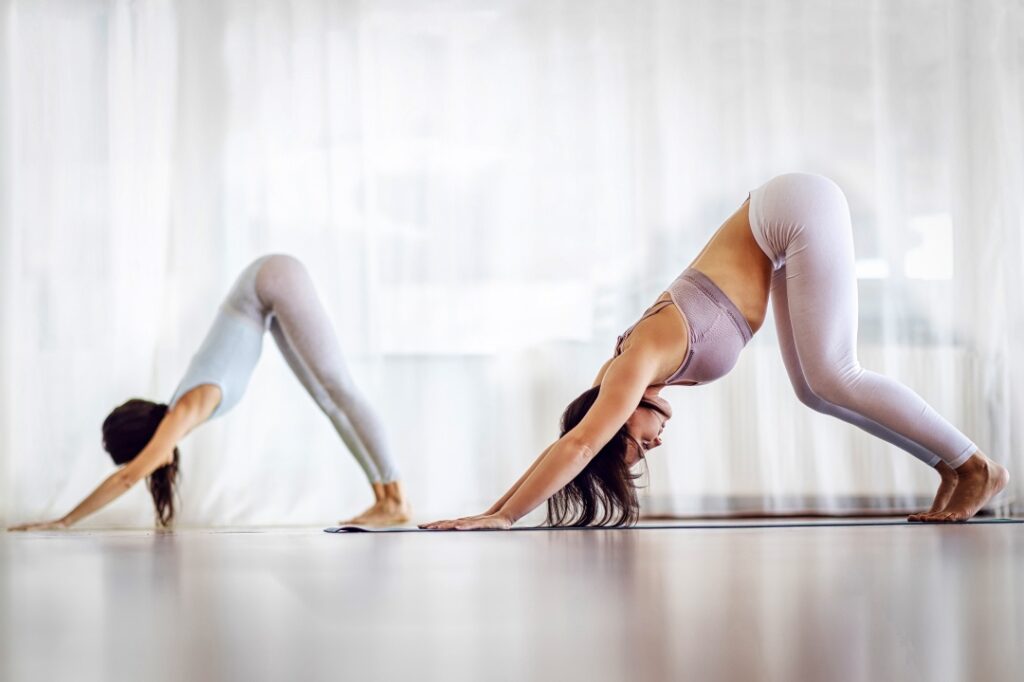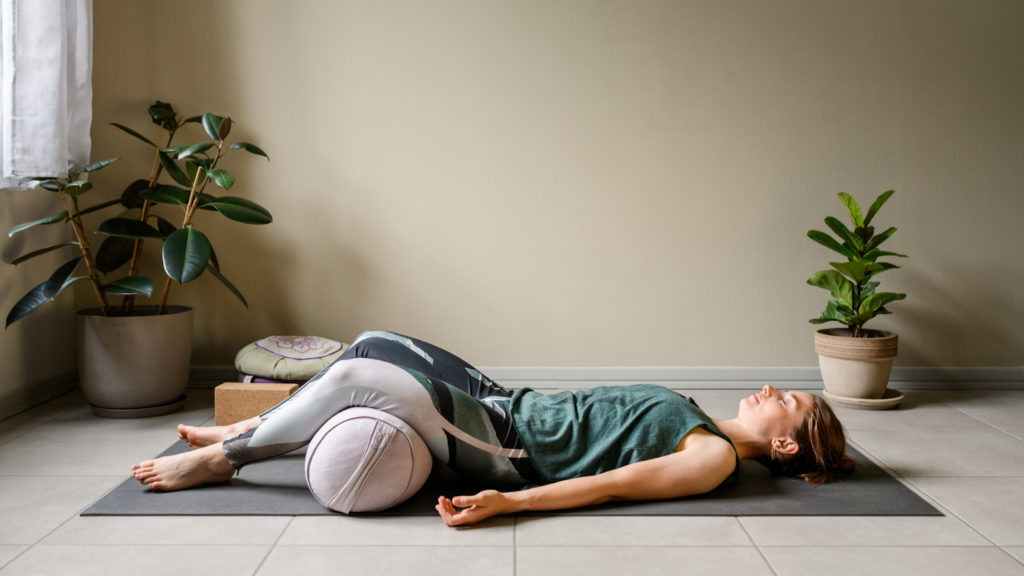

Yoga is an ancient tradition that nourishes physical but also mental and spiritual well-being. In 2025, when our schedules are more hectic than ever and not everybody has the time or means to attend studios or gyms, home practice of yoga is the most practical and efficient option, particularly for newbies. If you’re interested in starting yoga at home with no instructor, this “Home Yoga Setup: A Complete Guide for Yoga Setup for Beginners” will guide you through it all, starting from space selection to daily routines and newbie-friendly poses.
1. Select the Appropriate Space at Home
The most important thing that you’ll need to practice yoga at home is a clean and noise-free space.
Selecting a Good Spot:
Serene and clean: Choose a corner of your house where there is little disturbance or noise.
Natural Light: A bright place makes you feel happy and alerts you.
Good ventilation: Select a place close to a fan or window so that fresh air reaches you while you practice.
Build a peaceful ambiance: Employ candles, incense sticks, indoor plants, or soothing music so that the space becomes spiritual and relaxing.
2. Essential Basic Yoga Props
You don’t have to invest in expensive equipment to practice yoga. A couple of basic tools will be sufficient to assist and enhance your practice.
Home Yoga Basic Props:
- Yoga Mat: The most important one. Get a non-slip, medium-thickness mat (4mm–6mm). Foam or TPE mats are suitable for beginners.
- Yoga Blocks: Assist you to reach poses easily, even with restricted flexibility.
- Yoga Strap: Useful for stretching and correct alignment.
- Bolster or Cushion: Great for seated postures, meditation, or restorative poses.
- Water Bottle & Towel: Stay hydrated and wipe sweat during sessions.
3. Easy Learning Resources for Beginners
If you’re starting yoga on your own, learning from trusted sources can make a big difference.
Best Ways to Learn Yoga at Home:
YouTube Channels: Experiment with “Yoga with Adriene,” “Boho Beautiful,” or Indian professionals such as “Art of Living” or “Sadhguru Yoga.”
Yoga Apps: Applications such as Daily Yoga, Down Dog, Cult Fit and Pocket Yoga provide guided classes for beginners, intermediates, and experts.
Books & Posters: Carry a printed chart of simple yoga poses for ready reference.
4. Fix Your Routine and Practice Time
To derive actual benefits, you must incorporate yoga into your daily routine—not as an occasional activity.
Tips to Construct Your Yoga Routine:
- Morning Practice: Yoga in the morning is best as your mind is fresh and your stomach is empty.
- Start small: Start with 15–30 minutes a day. Gradually add more as you become accustomed to it.
- Warm-up & cool-down: Begin with Surya Namaskar or gentle stretches and conclude with Shavasana.
- Consistency: Regular short practice is better than infrequent long practice.
5. Diet and Lifestyle for Improved Yoga Outcomes
Yoga’s benefits are doubled when your total way of living helps it.
Simple Dietary Tips:
- Refrain from consuming heavy meals 1.5–2 hours prior to your session.
- Fresh fruits, nuts, and herbal teas are perfect pre/post-yoga snacks.
- Drink water before and after classes to keep yourself hydrated.
- Attempt to get regular sleep—sleep early, rise early.
6. Avoid These Beginner Mistakes
Nobody is perfect when beginning, but being conscious can prevent you from getting frustrated or injured.
Mistakes to Avoid:
- Overstretching: Don’t overdo it. Flexibility will come naturally with time.
- Skipping warm-ups: Skipping warm-ups and going straight to challenging poses leads to injury.
- Comparing with others: Each individual has a unique body and pace of progress.
- Being inconsistent: Practicing yoga on one day and taking three days off will not yield long-term results.
8. Practice Yoga as a Daily Routine
Creating a new habit involves regularity, motivation, and a little planning.
Tips to Stick to It:
- Keep a yoga journal: Record what you feel after each class to monitor mental and physical development.
- Get a yoga buddy: Having someone to practice with makes you more accountable.
- Establish small goals: Such as “7-day yoga streak” or “30-day flexibility challenge.”
- Treat yourself: Reward yourself for your achievements—purchase new props, have a healthy snack, or give yourself a day off.
Conclusion
Home Yoga Setup: A Beginner’s Guide to Yoga at Home (2025) is your handy guide to initiating yoga smoothly at home. From selecting the perfect yoga mat (read tips on how to select a yoga mat) to practicing starter asanas, this guide enables you to establish a sustainable and serene yoga practice.
Starting yoga at home doesn’t require a fancy studio or expensive gear, just needs intention, a little space, and your commitment. Whether your goal is to reduce stress, gain flexibility, or build strength, home yoga can truly transform your mind and body from the comfort of your living room.
So roll out that mat, breathe deeply, and step onto the lovely path of yoga. Your mind and body will be grateful.
Frequently Asked Questions (FAQs)
Q1: What basic things are needed for a home yoga setup?
A1: For beginners, a yoga mat, comfortable clothes, a bit of open space, and optionally a yoga block or strap are enough. Expensive equipment is not necessary in the beginning.
Q2: Is it safe to do yoga at home without a trainer?
A2: Yes, if you follow beginner-friendly videos and understand the instructions carefully, it is safe to practice yoga at home. However, you should stop immediately if you feel any pain or discomfort.
Q3: Is morning the only best time for yoga?
A3: Morning is considered ideal for yoga because the mind is fresh, but if you have a busy schedule, evening practice is also fine. Consistency is more important than the time of day.
Q4: How to choose the best spot at home for doing yoga?
A4: Choose a place with natural light, good ventilation, and minimal disturbance. A little space where you can stretch freely is enough—even a corner of your bedroom can work well.
Q5: Is it okay for beginners to learn yoga from a mobile app or YouTube?
A5: Absolutely! These days, there are many beginner-focused yoga apps and YouTube channels that offer step-by-step guidance. Just make sure you choose a reliable and trusted source.



No Comments yet!